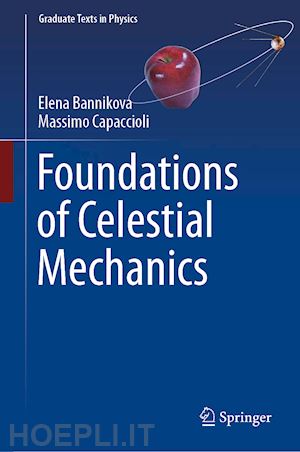

Questo prodotto usufruisce delle SPEDIZIONI GRATIS
selezionando l'opzione Corriere Veloce in fase di ordine.
Pagabile anche con Carta della cultura giovani e del merito, 18App Bonus Cultura e Carta del Docente
Elena Bannikova is Ukrainian Astrophysicists. She is working as Leading Scientific Researcher in the Institute of Radio Astronomy of the National Academy of Sciences of Ukraine. She is also Professor of the Department of Astronomy and Space Informatics (the Faculty of Physics) of V.N.Karazin Kharkiv National University where she is lecturing courses on Celestial Mechanics, Cosmology, Gravity: from Aristotle to black holes. Her fields of research are active galactic nuclei, gravitational potential, N-body simulations, gravitational lensing. She is co-investigator of some national projects including the recent one on “Astrophysical Relativistic Galactic Objects (ARGO): the life cycle of active nucleus”. In 2021 she has been awarded the title of “Knight” by the President of the Italian Republic.
Massimo Capaccioli is Italian Astrophysicist. He has served as Professor of astronomy at the Universities of Padua and then of Naples Federico II, where he is currently Emeritus. The resultsof his studies, dealing mainly with the dynamics and evolution of stellar systems and the observational cosmology, are presented in over 550 scientific articles in international journals. For a long time director of the Capodimonte Astronomical Observatory in Naples, he has conceived and managed, in synergy with the European Southern Observatory (ESO), the construction of the VLT Survey Telescope (VST), one of the largest reflectors fully dedicated to astronomical surveys. He has chaired the Italian Astronomical Society (SAIt) for a decade and for a three-year turn the National Society of Sciences, Letters, and Arts in Naples. He has collaborated with various Italian newspapers and with the national public broadcasting company of Italy (RAI). He has authored both university manuals and popular books. The list of his honors includes the title of Commander of the Italian Republic for scientific merits (2005), the honorary professorship granted by the University of Moscow Lomonosov in 2010, the honorary doctor-degrees by the Universities of Dubna (Russia, 2015), Kharkiv (Ukraine, 2017), and Pyatigorsk (Russia, 2019), and the medals Struve (2010; Russian Academy of Sciences), Tacchini (2013; SAIt), Karazin (2019; Karazin University, Kharkiv, Ukraine), and Gamov (2019: University of Odessa, Ukraine). He is Member of some academies in Italy and of the Academia Europaea, and since 2021 foreign Member of the National Academy of Sciences of Ukraine.










Il sito utilizza cookie ed altri strumenti di tracciamento che raccolgono informazioni dal dispositivo dell’utente. Oltre ai cookie tecnici ed analitici aggregati, strettamente necessari per il funzionamento di questo sito web, previo consenso dell’utente possono essere installati cookie di profilazione e marketing e cookie dei social media. Cliccando su “Accetto tutti i cookie” saranno attivate tutte le categorie di cookie. Per accettare solo deterninate categorie di cookie, cliccare invece su “Impostazioni cookie”. Chiudendo il banner o continuando a navigare saranno installati solo cookie tecnici. Per maggiori dettagli, consultare la Cookie Policy.